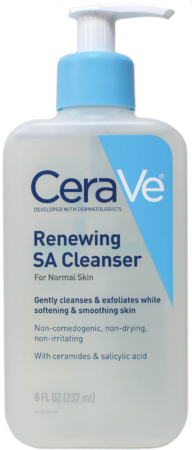Trying out new skincare products can be exciting, as well as trepidatious. There’s the hope of seeing the results that were promised, but for those of us who have been led astray in the past, there’s also the fear of wasting money on yet another lotion/potion that doesn’t deliver. There is also the unknown, even if you’ve done the research, read reviews, and zoomed in on the ingredients list, when delving in — what will the product look, feel, and smell like?
I’m a big fan of having a good sensory experience, as well as a results-driven approach to skincare and beauty. Whether you’re also a skincare devotee or take the wash-moisturize-and-go approach, you’ll most likely have some fragrance and texture in your products. Mostly these are welcome, pleasant scents, and smooth consistencies, but not always.
There can be some fragrances that may cause your skin harm. Most commonly labeled ‘parfum’ on ingredients lists, fragrance is an umbrella term for a cocktail of ingredients used by beauty companies to add scent to products, both from organic and synthetic material. More often than not, companies won’t list every ingredient of this cocktail but instead merely have “perfume” or “fragrance.” Even if they did list things like isoeugenol, limonene, and linalool (which are common allergens), I’m not a cosmetic chemist and would, like most of you, merely gloss over these ingredients looking more for things like retinal (which I am allergic to) and vitamin C. And while it makes sense that synthetics can cause irritation, even natural materials like essential oils can be just as irritating if you’re prone to sensitive skin.
If you’re in the sensitive skin camp, there are two common ways in which fragrance may cause a reaction. First, irritation of the outer layer of skin when the skin barrier is damaged. A damaged skin barrier results in tiny cracks where moisture will escape and foreign substances, like fragrance ingredients, seep through and cause dryness, redness, stinging, and breakouts. The second is allergic reactions with the skin recognizing a foreign ingredient and activating an immune response. In extreme cases, this could result in serious skin conditions like eczema.
How do you know if you have sensitive skin or are having a bad reaction caused by beauty products? Are you currently experiencing dry or flakey skin or red or rough patches and suspect your skincare may be the culprit? Do a skincare reset. Stop using your current roster of lotions, serums, and cleansers for a week or until the irritation subsides. Continue washing and moisturizing with gentle products like CerVe and Dove. Once you have your skin back to a healthy state, slowly re-introduce your previous lineup of skincare one product at a time, week by week, and monitor for signs of irritation.
Looking to add a new beauty brand to your routine but want to ensure it won’t irritate your epidermis? If you can, get a sample size of the product and do a patch test behind your ear for the next few days to see how your skin reacts. If you can’t acquire a sample, read online reviews, inspect the ingredients, and engage with customer service. Many sites have live chats for questions. At the store, give it a good smell. If you don’t find the smell appealing, then whether or not it’s irritating doesn’t matter. If you don’t like the way it smells, don’t buy it. The nose knows.
As mentioned above, texture can also be a concern. Oily products may cause breakouts; heavy products cause shine, grainy products may irritate. Much like the skincare reset, or patch test, you can try both methods if you’re unsure if the texture of your product is causing harm. Again, if you’re in the store with a sampler and it just doesn’t “feel” right, even if it smells good, it’s best to walk away. I, for one, prefer a creamy lotion and liquid foundation vs. a lightweight moisturizer and powder makeup.
Another thing to watch out for is color. If your products have been around your medicine cabinet awhile, partially used or unopened, they may have expired. If it’s been over a year since you’ve used a product, check the color. If it’s turning dark or amber, chances are it’s past its prime date. It will likely smell “off” and may even have some mold spots.
To avoid irritants, look for fragrance-free skincare that is also alcohol-free and non-comedogenic, which is a science-y way to say it won’t clog pores. Of course, not all scented products are bad. Many times, a brand will add better smells to its formulas to cover up the odors of other ingredients. If you like a product’s smell, do the patch test and keep an eye on its color and consistency. Consult a dermatologist if you experience extreme reactions to any product, new or old.




